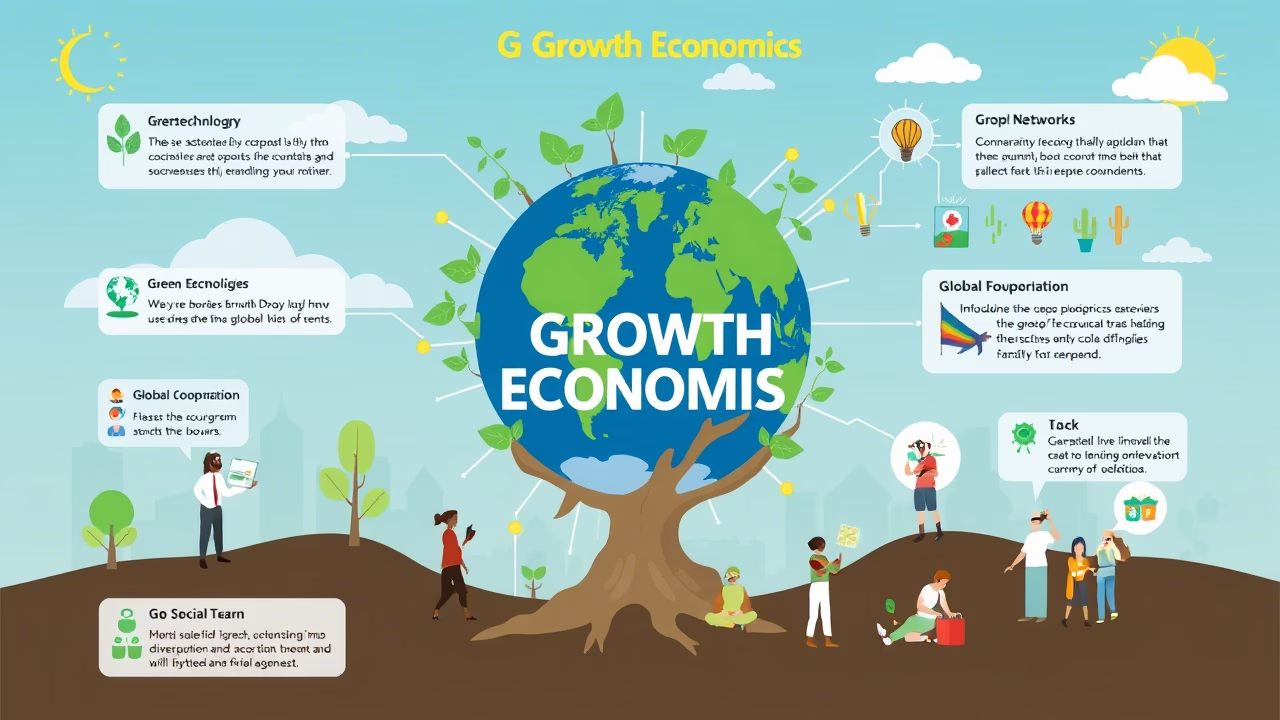In recent years, a new concept has emerged in the field of economics that challenges traditional notions of growth and progress. Known as G Growth Economics, this framework redefines how we think about economic development, emphasizing not just the quantity of growth, but its quality and sustainability. As the world grapples with climate change, inequality, and resource depletion, G Growth Economics offers a fresh perspective on how to achieve prosperity without compromising the well-being of future generations.
In this blog post, we’ll explore what G Growth Economics is, why it matters, and how it can guide us toward a more sustainable and equitable future.
What is G Growth Economics?
G Growth Economics is an evolving framework that shifts the focus from traditional GDP-driven growth to a more holistic understanding of economic progress. The “G” stands for Green, Global, and Good—three pillars that underpin this approach:
- Green Growth: Prioritizing environmental sustainability by decoupling economic growth from resource depletion and environmental degradation.
- Global Growth: Emphasizing inclusive and equitable growth that benefits all nations and communities, not just a select few.
- Good Growth: Ensuring that growth improves the quality of life for individuals, fostering well-being, health, and happiness.
Unlike traditional growth models, which often prioritize short-term gains and quantitative metrics like GDP, G Growth Economics takes a long-term, multidimensional view of progress. It recognizes that true prosperity cannot be achieved without addressing the interconnected challenges of climate change, inequality, and social well-being.
Why G Growth Economics Matters
The limitations of traditional growth models have become increasingly apparent in recent decades. While GDP growth has lifted millions out of poverty, it has also led to environmental destruction, widening inequality, and social fragmentation. G Growth Economics offers a way forward by addressing these shortcomings:
-
Environmental Sustainability
The planet’s resources are finite, and the current rate of consumption is unsustainable. G Growth Economics advocates for a transition to a circular economy, renewable energy, and sustainable practices that minimize environmental impact while fostering economic activity. -
Inclusive Prosperity
Traditional growth models often exacerbate inequality, with wealth concentrated in the hands of a few. G Growth Economics emphasizes equitable distribution of resources and opportunities, ensuring that growth benefits all segments of society. -
Human Well-Being
GDP is a poor measure of human progress. G Growth Economics incorporates metrics like health, education, and happiness to assess the true impact of economic policies on people’s lives.
The Pillars of G Growth Economics
Let’s dive deeper into the three pillars of G Growth Economics and how they can be implemented:
1. Green Growth: Balancing Economy and Ecology
Green growth is about creating economic value while preserving natural ecosystems. This involves:
- Transitioning to renewable energy sources like solar, wind, and hydropower.
- Promoting sustainable agriculture and reducing food waste.
- Investing in green technologies and infrastructure, such as electric vehicles and energy-efficient buildings.
- Implementing policies like carbon pricing and subsidies for clean energy to incentivize sustainable practices.
Countries like Denmark and Costa Rica have already made significant strides in green growth, demonstrating that economic development and environmental stewardship can go hand in hand.
2. Global Growth: Bridging the Gap Between Nations
Global growth focuses on reducing disparities between developed and developing nations. Key strategies include:
- Promoting fair trade and reducing barriers to market access for poorer countries.
- Supporting global initiatives like the United Nations Sustainable Development Goals (SDGs).
- Encouraging technology transfer and knowledge sharing to help developing nations leapfrog to sustainable practices.
- Addressing global challenges like climate change and pandemics through international cooperation.
3. Good Growth: Prioritizing People Over Profits
Good growth places human well-being at the center of economic policy. This involves:
- Investing in healthcare, education, and social safety nets to improve quality of life.
- Measuring progress using indicators like the Human Development Index (HDI) and Gross National Happiness (GNH) rather than just GDP.
- Creating jobs that are meaningful, well-paying, and aligned with sustainable practices.
- Ensuring that economic growth translates into reduced poverty, improved health outcomes, and greater social cohesion.
Challenges to Implementing G Growth Economics
While the principles of G Growth Economics are compelling, putting them into practice is not without challenges:
-
Political Will
Transitioning to a G Growth model requires bold policy decisions and long-term thinking, which can be difficult in politically polarized environments. -
Economic Trade-Offs
Short-term economic sacrifices may be necessary to achieve long-term sustainability, such as phasing out fossil fuels or reallocating resources to social programs. -
Global Coordination
Achieving global growth requires unprecedented levels of international cooperation, which can be hindered by geopolitical tensions and competing interests. -
Measurement and Accountability
Developing and adopting new metrics for progress, beyond GDP, is a complex task that requires buy-in from governments, businesses, and civil society.
The Path Forward: How to Embrace G Growth Economics
Despite these challenges, the transition to G Growth Economics is both necessary and achievable. Here are some steps that governments, businesses, and individuals can take to embrace this new paradigm:
- Governments: Implement policies that incentivize green technologies, promote equitable growth, and prioritize human well-being. Examples include carbon taxes, universal healthcare, and investments in education.
- Businesses: Adopt sustainable practices, invest in renewable energy, and prioritize corporate social responsibility. Companies can also play a role in reducing inequality by paying fair wages and supporting local communities.
- Individuals: Make conscious choices that align with G Growth principles, such as reducing waste, supporting sustainable brands, and advocating for policies that promote equity and environmental stewardship.
Conclusion: Redefining Progress for a Better Future
G Growth Economics represents a fundamental shift in how we think about economic progress. It challenges us to move beyond the narrow focus on GDP and embrace a more holistic, sustainable, and inclusive vision of growth. By prioritizing green practices, global equity, and human well-being, we can create a world where prosperity is not just measured in dollars, but in the health of our planet and the happiness of its people.
The journey toward G Growth Economics won’t be easy, but the stakes are too high to ignore. As we face the defining challenges of our time, this new framework offers a roadmap for building a future that is not only prosperous but also just and sustainable.
What do you think about G Growth Economics? Do you believe it’s the right approach for the 21st century? Share your thoughts in the comments below!
Discover more from Pasindu Lakshan Perera
Subscribe to get the latest posts sent to your email.




